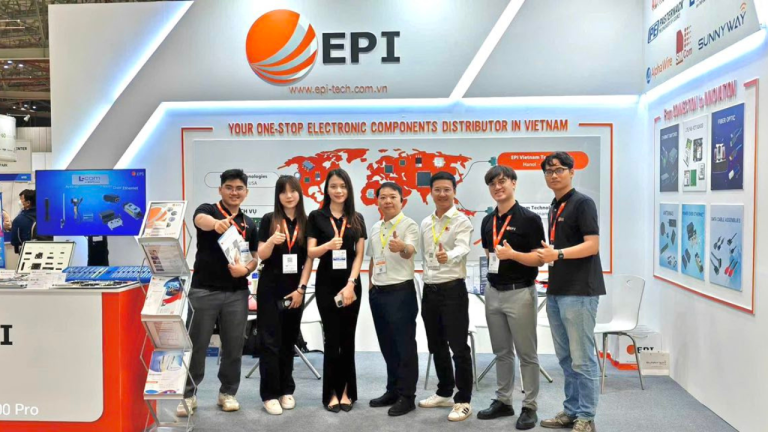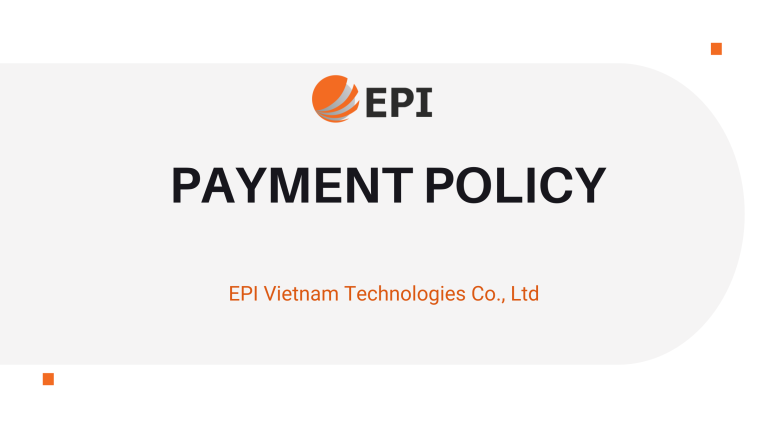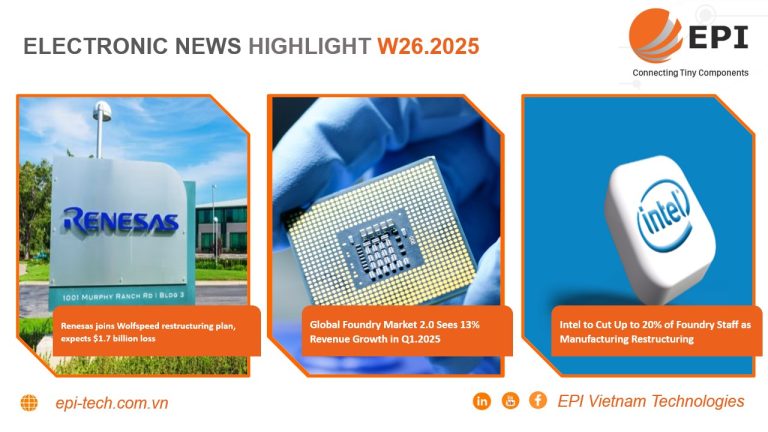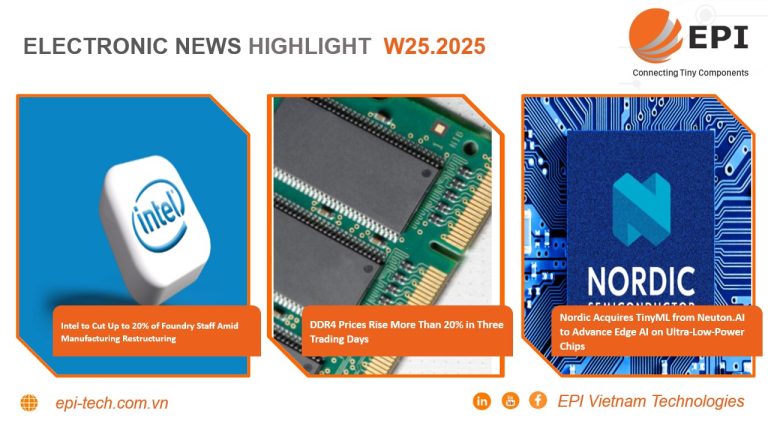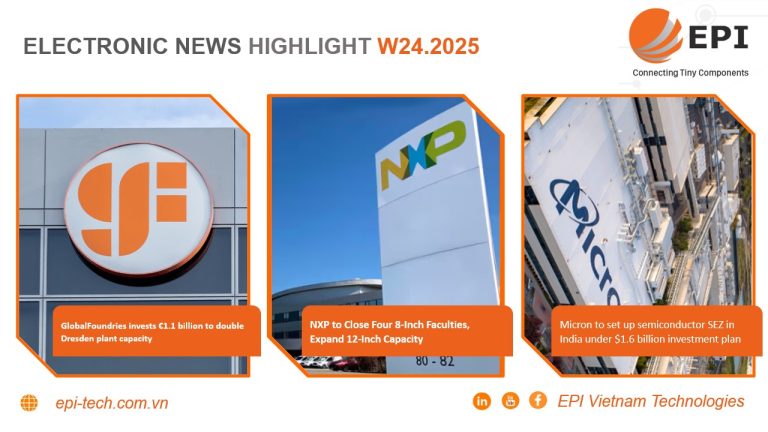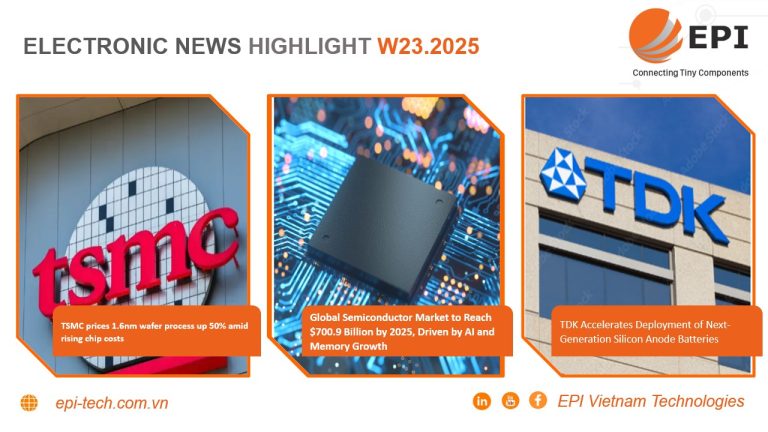ELECTRONICS NEWS HIGHLIGHT W1.2024
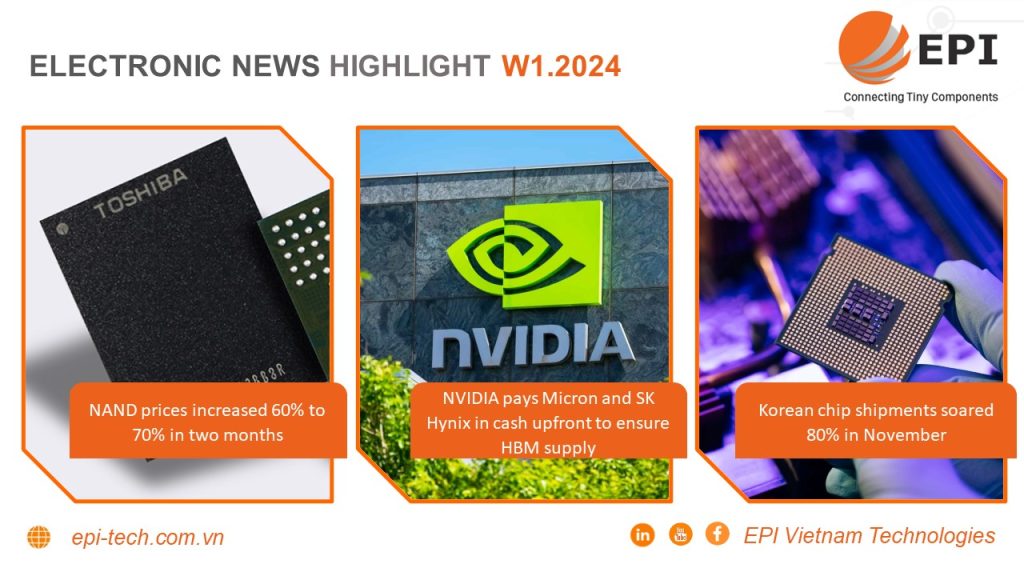
1. NAND prices increased 60% to 70% in two months
Memory chip prices have been increasing since the second half of 2023. While DRAM prices have only increased by about 20%, NAND flash memory prices have skyrocketed between 60% and 70% in the past two months. However, final market demand is unlikely to increase significantly.
According to predictions of many experts, the global smartphone market will recover next year. That makes many mobile phone manufacturers have begun to stockpile raw materials, especially memory chips, to prepare for the production process. This has led to an increase in the prices of DRAM and NAND flash memory. Besides the demand for mobile phones, the development of artificial intelligence applications is also creating a huge demand for memory card chips, especially DRAM.
Global smartphone shipments in the third quarter of 2023 reached approximately 275 million units, down 0.6% year-on-year. After 9 consecutive quarters of decline, shipments will likely increase compared to the same period last year in the fourth quarter of this year. This is considered a good sign for the semiconductor industry as market demand begins to recover and develop.
Learn more: NAND prices soared 60% to 70% in two months
2. NVIDIA pays Micron and SK Hynix in cash upfront to ensure HBM supply
According to the report, Nvidia paid around $540 million to $770 million in advance to SK Hynix and Micron to ensure a stable supply of high-bandwidth memory (HBM).
This prepayment is seen as an option to ensure advanced memory supply for Nvidia next year in the context of increased demand for HBM due to the development of artificial intelligence applications.
Despite the overall HBM market shortage, memory vendors still face a huge investment burden. Producing and manufacturing this advanced memory product requires a lot of costs in terms of machinery, lines and technology. As HBM continues to develop, these requirements will increase. Therefore, large upfront payments from end customers can be seen as a significant investment to support manufacturers such as SK Hynix and Micron to develop and produce HBM on schedule.
Learn more: Nvidia reportedly gives SK Hynix and Micron significant advance payments to secure HBM supply
3. Korean chip shipments soared 80% in November
South Korea’s semiconductor sector had a notable improvement in November, showing significant growth in both chip production and shipments. The latest reports show that chip output increased by 42% year-on-year, marking the most significant increase since the beginning of 2017. At the same time, chip shipments jumped an impressive 80%, marking the largest increase since late 2002.
The report paints a picture of a rapid recovery for the Korean chip industry, bringing positive impacts to key players in the semiconductor landscape, including industry giants Samsung Electronics and SK Hynix. This resurgence is a testament to the industry’s resilience, signaling a potential recovery in demand from the global technology industry.
This data not only highlights the strong recovery of the Korean chip industry but also sends optimistic signals to the broader semiconductor market. The significant increase in both production and shipments shows a promising trajectory, hinting at a temporary recovery in demand from the global technology sector.
According to South Korea’s Ministry of Finance, the revival is due to market demand for high-performance semiconductors. This increase is particularly driven by growing demand for emerging technologies such as artificial intelligence, which is playing a key role in driving the recovery of the chip and machinery industry.



 English
English  Tiếng Việt
Tiếng Việt 





